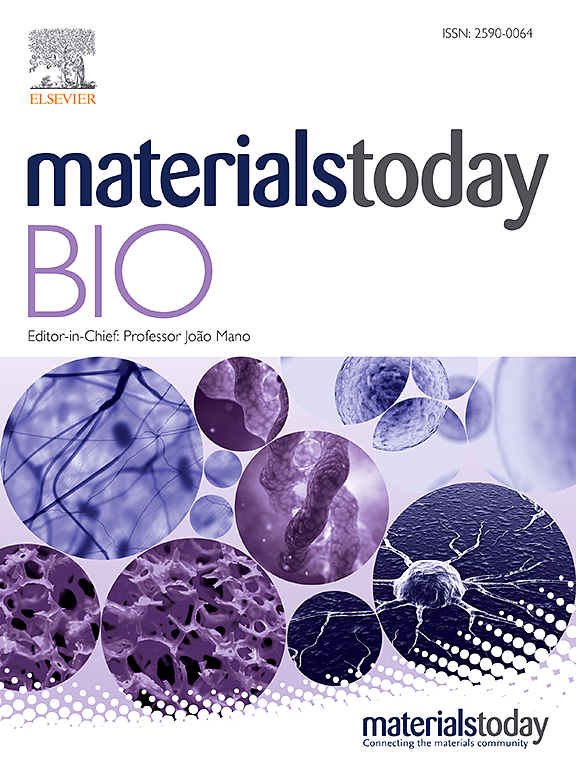ECM-inspired stem cell secretome sustained releasing composite nanofibrous membranes for accelerated wound healing
IF 10.2
1区 医学
Q1 ENGINEERING, BIOMEDICAL
引用次数: 0
Abstract
Designing dressings that mimic the composition, structure, and function of native skin is of great significance. Despite commercial decellularized extracellular matrix (dECM)-based wound dressings promoted skin regeneration process, reconstructing the fibrous microstructure of native dermis remains a significant challenge. In this work, a dECM-based composite nanofibrous membranes loaded with stem cell secretomes (SCS/dECMM) have been developed for accelerating wound repair, which comprehensively mimicked the dermal tissue in terms of composition, structure, and function. In detail, dermal dECM was prepared by eco-friendly supercritical carbon dioxide (SC-CO2) technology and then mixed with SCS to obtain SCS/dECMM by using electrospinning technology. The resulting nanofibrous membrane with 555.19 nm diameter that maintained SCS bioactivity while enabling sustained SCS release. SCS/dECMM significantly enhanced cell adhesion, proliferation, migration, and angiogenesis, thereby continuously promoting wound repair. In vivo wound healing results revealed that SCS/dECMM accelerated wound healing by promoting re-epithelialization, collagen deposition, and vascularization. SCS/dECMM offered a novel strategy for accelerating wound healing by replicating the composition, structure, and function of native skin.

ecm激发的干细胞分泌组持续释放复合纳米纤维膜加速伤口愈合
设计模仿天然皮肤成分、结构和功能的敷料具有重要意义。尽管商用脱细胞细胞外基质(dECM)伤口敷料促进了皮肤再生过程,但重建天然真皮层的纤维微观结构仍然是一个重大挑战。在这项工作中,研究人员开发了一种基于decm的复合纳米纤维膜,负载干细胞分泌组(SCS/dECMM),用于加速伤口修复,该膜在组成、结构和功能方面全面模仿了真皮组织。采用环保的超临界二氧化碳(SC-CO2)技术制备真皮dECM,然后与SCS混合,采用静电纺丝技术得到SCS/dECMM。得到的纳米纤维膜直径为555.19 nm,在维持SCS生物活性的同时能够持续释放SCS。SCS/dECMM显著增强细胞粘附、增殖、迁移和血管生成,从而持续促进创面修复。体内伤口愈合结果显示,SCS/dECMM通过促进再上皮化、胶原沉积和血管形成来加速伤口愈合。SCS/dECMM通过复制天然皮肤的成分、结构和功能,为加速伤口愈合提供了一种新的策略。
本文章由计算机程序翻译,如有差异,请以英文原文为准。
求助全文
约1分钟内获得全文
求助全文
来源期刊

Materials Today Bio
Multiple-
CiteScore
8.30
自引率
4.90%
发文量
303
审稿时长
30 days
期刊介绍:
Materials Today Bio is a multidisciplinary journal that specializes in the intersection between biology and materials science, chemistry, physics, engineering, and medicine. It covers various aspects such as the design and assembly of new structures, their interaction with biological systems, functionalization, bioimaging, therapies, and diagnostics in healthcare. The journal aims to showcase the most significant advancements and discoveries in this field. As part of the Materials Today family, Materials Today Bio provides rigorous peer review, quick decision-making, and high visibility for authors. It is indexed in Scopus, PubMed Central, Emerging Sources, Citation Index (ESCI), and Directory of Open Access Journals (DOAJ).
 求助内容:
求助内容: 应助结果提醒方式:
应助结果提醒方式:


